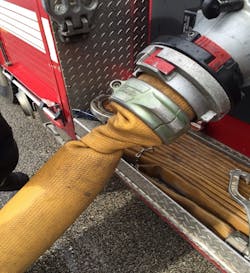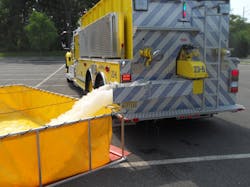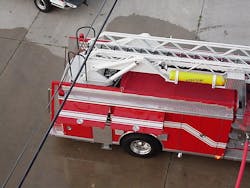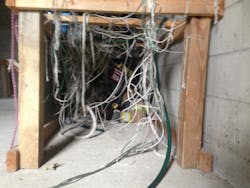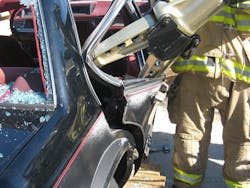Company-Level Training Ideas for all Firefighters
The efforts of the training officer and their division must support the mission of the fire department. This includes the assistance and support of the company officer in the delivery of the training to each crew in a consistent and efficient manner. This article will also identify common and easily performed training drills for any department to utilize, no matter the size or the staffing. The focus should be on utilizing the equipment that your department operates with during responses because familiarity builds muscle memory, so when the alarm is in, the members can work more efficiently and safely.
Engine company disciplines
The primary focus for any engine company is to establish a competent water supply, and to be able to stretch an appropriate handline into a compartment to locate, confine and extinguish the fire. While some may say that this level of training is too basic, a wise chief once told me that departments can usually never go wrong when they go “back to the basics.” Therefore, a thorough review of engine company skills can be broken into the following examples:
Timed hydrant connections: Going back to the basics can help future operations, and this includes water supply. As simple as making the hydrant connection seems, problems can still arise at the basic level (see Photo 1).Ladder company disciplines
Ladder placement: Situational awareness for apparatus location includes more than just the street view. The type of aerial device and the intended use on scene will also determine the best location for maximum efficiency (see Photo 5).
Power saw calisthenics: Working with power tools can be cumbersome and can add tool reaction to the equation. Members should practice holding the equipment in multiple positions, including on a flat surface (for roofs), on a vertical surface (such as doors), and horizontally (for garage doors or security bars).
Ventilation—natural, positive and negative pressure: A simple drill in the station includes a powered fan at an entry door to the fire station. Once the fan is turned on, members can open and close various interior doors and witness the effect of door positioning at each turn and hallway.
Search and SCBA confidence skills: Consistent practice with an SCBA includes being able to operate in a compromised position and still being able to function. Simple confidence props can be constructed with minimal materials and can be used to enhance the member’s skills and abilities in hazardous environments (see Photo 6).
Ground ladder target practice: Crews can practice raising ground ladders for various assignments, such as ventilation, hoseline applications, and rescue situations. Use various targets at the fire station and have the members determine the correct size ladder and placement of same to achieve each objective.
Rescue company disciplines
RIC company equipment familiarization: Rapid intervention companies (RIC) are expected to operate quickly and efficiently in the worst-case environments on the fireground. One of the most important skills is being able to operate every tool and connection in the company RIC bag. Take the time regularly to review all of the components of the bag and be able to operate each of them in zero visibility (see Photo 7).Extrication tool calisthenics: The rescue scene can be a dynamically changing process and can require members to handle heavy equipment in compromised positions. Basic calisthenic training with these tools can increase proficiency on the rescue scene and lessen the potential for injury (see Photo 8).
Cribbing and stabilization skills: Success on the extrication scene relies heavily on stabilization. Being proficient in cribbing and supporting loads of varying sizes and shapes is critical. Be sure to include objects of various sizes and shapes. Local public works facilities can provide different types of materials and objects to test the skills of the members (see Photo 9).
Patient packaging skills: Patient care is at the core of the services we provide. Patients can come in varying shapes, sizes, and limitations. It is best to practice techniques for moving patients in different positions and situations. Our rescue drills include moving a rescue mannequin constructed of old fire hose up and down multiple floors, in different packaged positions, and while using different packaging systems available to the members (see Photo 10).Drills for any company
Building construction tours: Touring various areas of the department’s response area helps to provide familiarization, as well as identify potential issues that may arise on the incident that no one counts on (see Photo 11).Street familiarization: Place strips of paper with street names in a bowl on the training table. Members pick out a street and have to identify what area the street is in, and how to get there using two different routes of travel.
Tool lab: Training sessions can include one apparatus a month and all members are required to show proficiency in the tool’s operation, maintenance and servicing the parts of the tool.Conclusion
Quality training for company members is not driven by financial capabilities; it is driven by the capabilities of the company officer. Every drill we discussed this month can be done at little to no cost whatsoever, and can be provided to each and every member of the department. Moreover, multiple sessions can provide variations of future applications of these skills. The company officer is responsible for the overall capabilities of their respective members, and that can make or break the incident. Keep the training floor busy and flexible, and the rewards will benefit our customers, both inside and outside the department.
Until next time, stay focused and stay safe.
